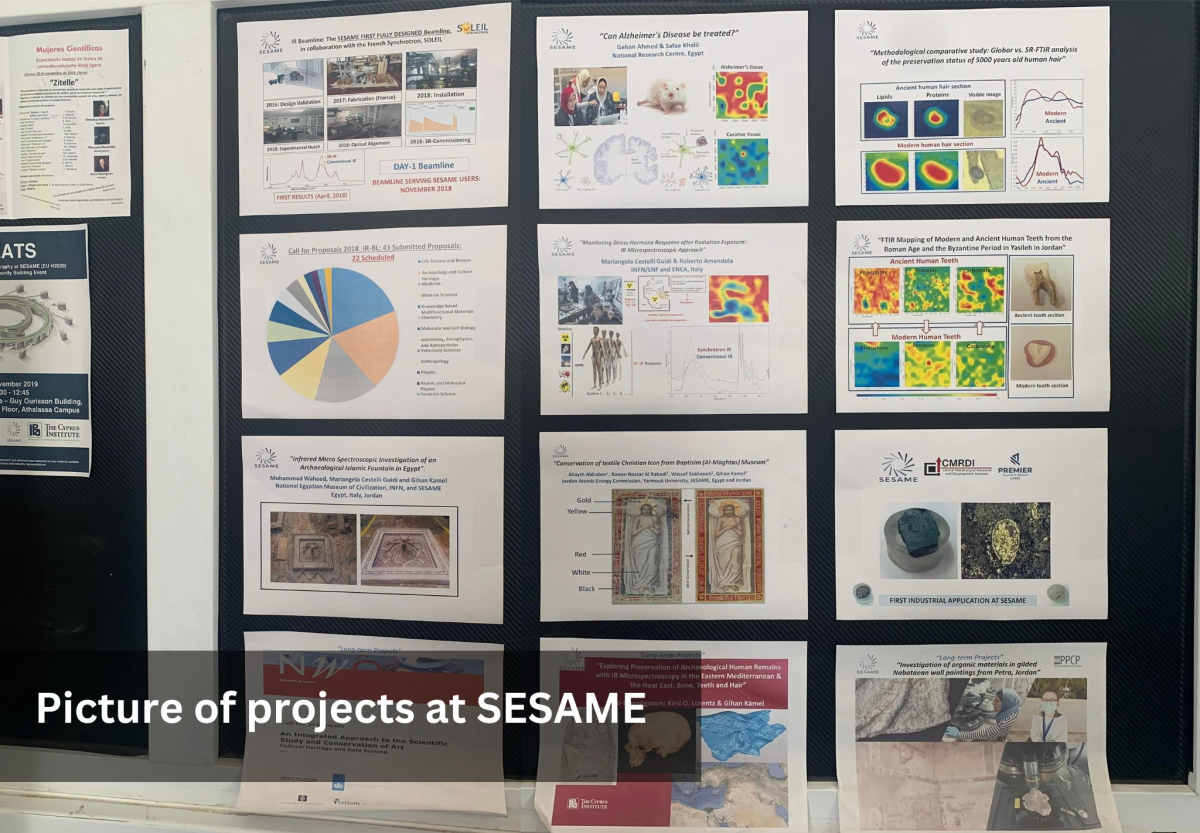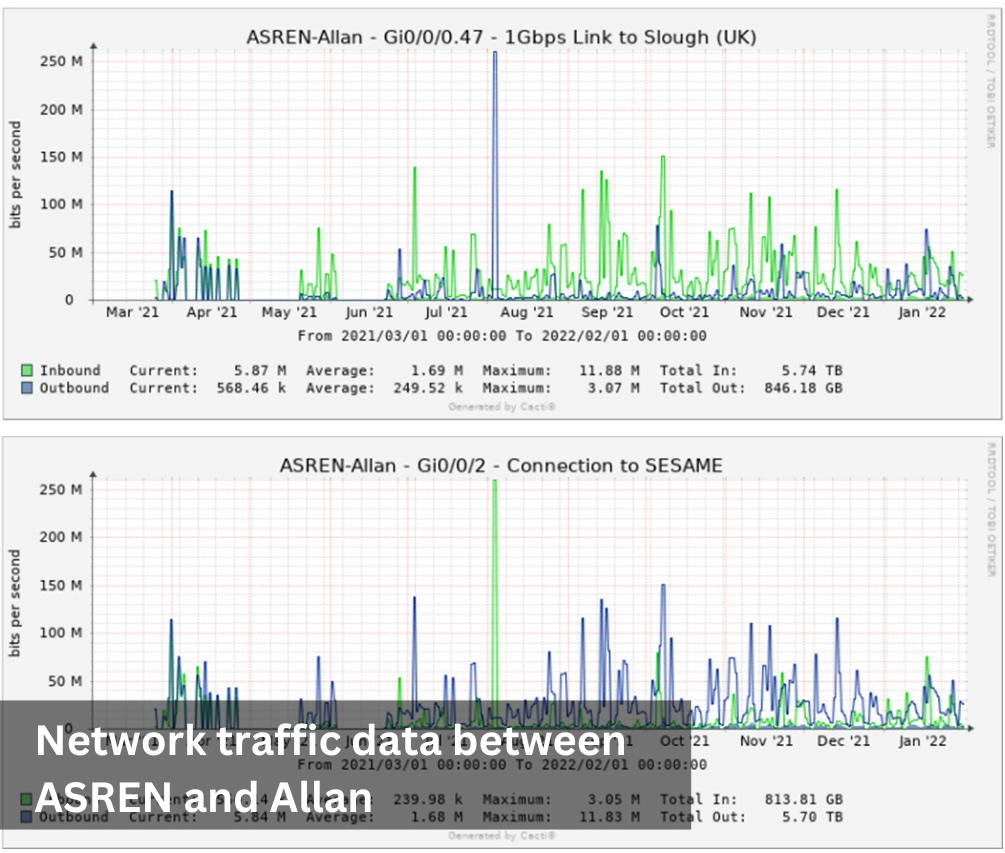
SESAME Jordan: Enhancing cultural heritage conservation toward human and economic development
Posted on: 13 Dec, 2023
This story was originally posted on the AfricaConnect3 website
As an ancient civilization with over 18 countries and territories, the Middle East region has historical and cultural richness unparalleled in the world. However, the region’s political instability and dramatic economic changes continue to pose challenges to the conservation of heritage resources.
Why cultural heritage conservation?
“If I were to start again, I would start with culture” – Jean Monnet
Conserving cultural heritage in the Middle East region may seem less of a priority compared to more pressing issues faced by the region such as education, poverty alleviation, and job creation. But, in the long term, effective conservation of heritage resources not only contributes towards preserving and safeguarding the region’s heritage assets, but also revitalizes local economies, thus contributing directly to creating jobs, alleviating poverty and sustaining sustainable development.
Seeing better with synchrotron light
Located in Amman – Jordan, SESAME, the Synchrotron-light for Experimental Science and Applications in the Middle East, is the first synchrotron light source for the Middle East and neighboring regions. SESAME is a state-of-the-art characterization facility that can generate extremely brilliant X-ray and Infrared beams. These beams are perfect for research and development and for solving product and processing issues, as they can be used to look inside working products (non-destructively), determine the chemical composition and structure of materials and track chemical reactions. This can be leveraged to give unique insights in various scientific fields ranging from medicine and biology, through materials science, physics and chemistry to healthcare, the environment, agriculture and archaeology.
Heritage conservation science at SESAME
 In recent decades, the extraordinary power of synchrotron light has made it an essential tool for studying matter on scales ranging from biological cells to atoms, using radiation from the infrared to X-rays. This has had a profound impact on the study of cultural and natural heritage, including non-destructive investigations of archaeological / historical objects, artworks and artefacts as well as human remains.
In recent decades, the extraordinary power of synchrotron light has made it an essential tool for studying matter on scales ranging from biological cells to atoms, using radiation from the infrared to X-rays. This has had a profound impact on the study of cultural and natural heritage, including non-destructive investigations of archaeological / historical objects, artworks and artefacts as well as human remains.
Archaeological remains of humans who lived in the Middle East, the cradle of civilization as we know it, are being studied at SESAME. Ancient bone, dental tissues, and hair are being analyzed. SESAME employs synchrotron radiation to shed light on key questions for the archaeology of the region. Through the use of this technology it is possible to explore evidence for human heavy metal exposure, as well as preservation status of bone, dental tissues and hair at micrometer scales.
The first user-led experiment conducted at SESAME was carried out by scientists from The Cyprus Institute in collaboration with SESAME’s IR Beamline Scientist Gihan Kamel. They studied ancient human remains from the dawn of metalworking in order to understand the uptake of elements such as copper into human bodies. This work not only allows us to understand our ancestors better, it also has relevance to human health issues today. Furthermore, the findings will help appropriate and informed conservation decisions to be taken and will make it possible to sustain their historical value.
Connecting SESAME to the world
As a ‘user facility’, open to scientists and industrial users from around the world to carry out research in various fields, SESAME produces thousands of gigabytes every day. Each beamline experiment produces on average 2-3 TB of raw data – which are meaningless without analysis and visualization. Local storage and a certain capacity of HPC resources are available at SESAME for real time requirements, however beamline data increasingly need to be transferred to HPC centers in and outside the region for analysis, including partners in the EU-funded Virtual Research Environment Vi-SEEM project, mainly the Cyprus Institute, or to the home institutions of SESAME users.
To tackle this data deluge, via its dedicated link from Amman to its Point of Presence (PoP) in London, the Arab States Research and Education Network (ASREN) has been connecting SESAME to the pan-European Research and Education Network (GÉANT) and, by extension, to the global R&E networking infrastructure since July 2016, with the support of the European Union’s co-funded project EUMEDCONNECT3 (2011-2021).
This advanced dedicated international connectivity is crucial, as it serves to connect SESAME with other networks worldwide and guarantees better access to services for SESAME’s community, which spans on EU and the Middle East and North Africa regions and beyond. A more connected world of research will provide more opportunities for the regions’ students and researchers to engage with their peers around the world and to reach advanced research and educational resources.
Growing connectivity demand
 With the Tomography beamline (BEATS) to become operational in 2023, exponential bandwidth grow is anticipated. SESAME’s BEATS will be the first tomography beamline in the Middle East, aimed at serving user communities in the region, in particular the cultural heritage and archaeology communities. This creates an obvious advantage for these communities to be able to access a state-of-the-art beamline close to the source of samples or remains to be analysed, especially with the newly-launched laboratory for Cultural Heritage at SESAME. The bandwidth usage is foreseen to skyrocket once the tomography beamline will start to produce huge datasets in a few months from now.
With the Tomography beamline (BEATS) to become operational in 2023, exponential bandwidth grow is anticipated. SESAME’s BEATS will be the first tomography beamline in the Middle East, aimed at serving user communities in the region, in particular the cultural heritage and archaeology communities. This creates an obvious advantage for these communities to be able to access a state-of-the-art beamline close to the source of samples or remains to be analysed, especially with the newly-launched laboratory for Cultural Heritage at SESAME. The bandwidth usage is foreseen to skyrocket once the tomography beamline will start to produce huge datasets in a few months from now.
The dedicated international connectivity has also proved vital during COVID-19 enforced lockdown, as due to travel restrictions caused by the pandemic remote experiment and mail-in procedure become standardized on the Synchrotron community, particularly in the area of cultural heritage. Researchers sent their tissues and samples to Allan and analysed the experimental data subsequently online which required higher network capacities. Accordingly, connectivity platforms today play a vital role in remotely publishing and enabling the experimental lab.
Furthermore, SESAME seeks to develop and extend its cloud capabilities to host more content and services for the use of scientists.
The network challenge
Since 2016, the European Union has been supporting SESAME’s dedicated international connectivity within the framework of its co-funded project EUMEDCONNECT3, which ended December 2021. However, through contingency funding for this link in the EMS (Eastern Med Support) budget together with SESAME’s own budget allocation, notwithstanding their very restricted budget constraints, the connectivity will keep going until the end of 2023.
SESAME is already a major regional scientific facility which will need world-class connectivity to tackle the generated data deluge in the coming years. Furthermore, a downgrading or a disconnection of the current SESAME connectivity link will undoubtedly affect the offered services and the remote users’ experience. Therefore, continued EU support to help secure the required connectivity budget against the backdrop of financial constraints is vital. Both ASREN and GÉANT are committed to continuing this support and are already in discussion with the EU to explore future funding solutions and sustainability options of the connectivity beyond the EUMEDCONNECT3 project fund.
Sesame as model for the African Light Source
Globally, there are some 70 light sources, but Africa is the only habitable continent without a synchrotron of its own leaving Africa far behind on scientific and technological development. It’s a problem that researchers are hoping to correct with plans for an African light source.
Africa may get its first synchrotron sometime in the next ten to fifteen years, joining other nations that seek to bolster their scientific and technological development. The organization for the proposed African Light Source is patterned after SESAME, considering some particular similarities between Africa and the Middle East.
The planned African synchrotron has received backing from SESAME and around the world. A Memorandum of Understanding has been signed between SESAME and the African-light Source Foundation in November, 2021. This is to provide various expertise and support, as well as, to help building up the human capacity of both parties by exchanging experiences and knowledge.
Having a large-scale facility like this can be an incredible attractor for strengthening the African scientific and research community. Once the light source is operational a growing need of connectivity will emerge, and this is exactly where the African RRENs and its member NRENs could come forward for the support of the project, helping to contribute to its success and empowering its user communities from Africa and all over the world.
Visit SESAME website https://www.sesame.org.jo/

Comments (0)
Post Your Comment